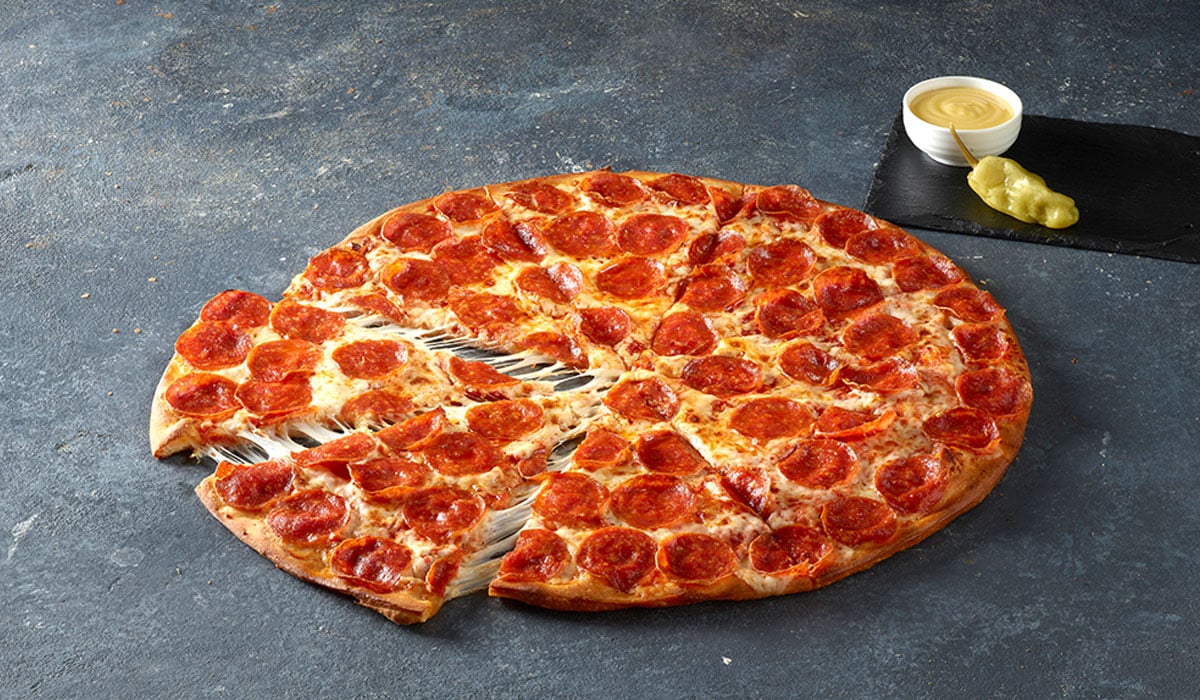In a first for Papa Johns since prior to the pandemic, same-store sales took a slight dip in North America during the third quarter as record-high costs and price sensitivity took a toll.
Total revenues of $511 million in Q3 of 2022 were down $2 million—less than 1 percent—from a record third quarter in 2021.
“Obviously our comps are a little tougher than some of our competitors,” Papa Johns CEO Rob Lynch says. “But thinking about this quarter, it’s the culmination of a lot of things. I think everyone needs to recognize, the segment of our industry has taken a lot of pricing to mitigate the significant amount of inflation.”
In response to experiencing 15 to 17 percent inflation year-on-year, Papa Johns has increased pricing 8 to 10 percent, which Lynch notes has had an impact on transactions. But he’s quick to point out the discussion around “pizza fatigue” is false, from his perspective. “I don’t think it’s that at all. It’s just a function of elasticity of pricing,” he says.
“As the economy continues to be challenged and consumer sentiment continues to decline, there’s going to be more price sensitivity,” Lynch adds.
Yet, Lynch remains optimistic about the pizza chain’s outlook. Global systemwide sales were up 0.5 percent year-over-year to $1.2 billion in Q3, which is on top of 11 percent growth in 2021.
Over the last three years, Papa Johns grew systemwide comparable sales in North America by 30 percent, and 2022 will be the highest sales volume in the brand’s history. Lynch also highlights the company’s “11 quarters of industry outperformance” balances the scale a bit.
Papa Johns will continue to “stay focused on premium innovation, while also making sure we’re not tone deaf” to lower-income consumers looking for value, Lynch says.
To stay competitive with larger pizza players such as Domino’s, Papa Johns recently launched Papa Pairings, a national deal where customers can buy two or more items from a limited menu selection for $6.99 each.
Since its introduction in September, the Papa Pairings offering has successfully driven incremental transactions “from our more value-oriented customers by engaging them with an accessible price point,” Lynch told investors on the company’s Q3 earnings call on Thursday.
In October, Papa Johns also revealed the return of the Shaq-a-Roni pizza to menus in partnership with board member and franchisee, Shaquille O’Neal. The $13.99 extra-large pizza is made with the brand’s six-ingredient dough, extra pepperoni and cheese and cut into eight large “Shaq-sized slices.”
Though Q3 slows pizza delivery, Papa Johns pushes franchise development
Though pizza has historically performed well during economic downturns and outperformed other quick-service concepts, Lynch says, the segment is also vulnerable to seasonality factors. The third quarter is typically the slowest period for pizza delivery as the weather warms and people go on vacation. While quick-service restaurants with drive-thrus benefit from summer road-trippers, pizza is more often enjoyed inside homes.
“Pizza does better in bad weather, when people are kind of stuck in their houses in colder or rainy weather,” Lynch says. “We didn’t see that during the pandemic because people were in their houses, but now we’re seeing that return to seasonality. It was also exacerbated this summer as people were doing even more traveling after being cooped up the last couple years.”
As the air chills heading into the holidays, continued franchise development bodes well for Papa Johns. The brand expects to open a total of 240 to 260 locations in 2022, and has signed some of the largest multi-unit agreements both domestically and internationally over the past three years, which will result in approximately 3,000 new units being built globally. That’s despite facing headwinds internationally, particularly in the U.K. market.
“It continues to show the excitement that franchisees have for the long-term investments they’re making in our brand,” Lynch says. “That’s probably one of the biggest things we want to continue to reinforce. Development is a key leading indicator of peoples’ confidence in a brand, and we continue to open restaurants and sign more agreements.”
“We believe the items impacting our 2022 guidance are short-term market specific situations, and do not impact our confidence in our ability to achieve our multi-year development goal to grow net new units by 1,400 to 1,800 units between fiscal years 2023 and 2025,” Lynch told investors on the Q3 earnings call.
The company ended Q3 with 5,589 stores globally, including 3,358 in North America and 2,231 internationally. A net of 18 units opened across the world in the quarter.
Average unit volumes at North American Papa Johns locations sit at more than $1.1 million and continue to grow, he added.
Current Papa Johns franchisees are “keeping a watchful eye like we are,” Lynch says. “They’re in the same boat as us, where we believe this cost structure has to normalize. Input costs that go into the business can’t remain at all-time highs in perpetuity.”
As the costs of ingredients such as cheese, wheat, and soybean oil start to soften and level out, margins will begin to bounce back, he says. “Though we might not see double-digit comps like we’ve seen over the last couple years, if we can hold or grow sales slightly as we see some cost pressures release, it will help restaurant P&Ls.”
“In an environment as challenging as the one we’ve had, I think that we’re really happy with our performance,” Lynch says.








